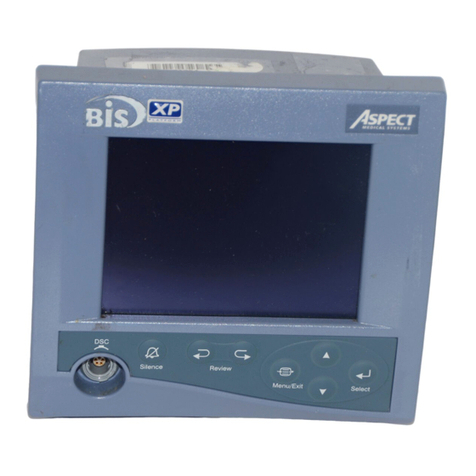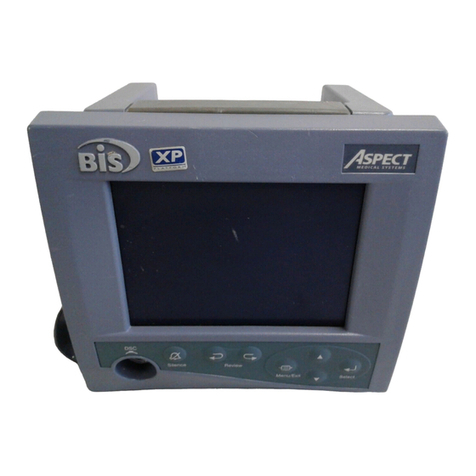
2.6 Initial Menu Settings.................................................................................................. 2-13
2.6.1 Language Selection................................................................................................................................. 2-13
2.6.2 Date and Time........................................................................................................................................ 2-13
2.6.3 Save Settings............................................................................................................................................ 2-14
3OPERATING THE BIS VIEW MONITORING SYSTEM........................ 3-1
3.1 Preparing for Operation ............................................................................................. 3-1
3.2 Sensor Check................................................................................................................ 3-4
3.3 BIS Number Display Screen ....................................................................................... 3-6
3.3.1 BIS (Bispectral Index) Value................................................................................................................... 3-6
3.3.2 Battery Icon............................................................................................................................................... 3-7
3.3.3 Alarm Icon................................................................................................................................................. 3-7
3.3.4 Signal Quality Indicator........................................................................................................................... 3-8
3.3.5 Electromyograph (EMG) Indicator ....................................................................................................... 3-8
3.3.6 Case ID....................................................................................................................................................... 3-8
3.3.7 Message Region ........................................................................................................................................ 3-8
3.3.8 Soft Key Screen Selections..................................................................................................................... 3-9
3.4 BIS Trend Display Screen with Sensor Status.......................................................... 3-9
3.4.1 BIS Trend Graph .................................................................................................................................... 3-10
3.4.2 Target Range ........................................................................................................................................... 3-10
3.5 BIS Trend Display Screen with EEG........................................................................ 3-10
3.6 Menu Selections ......................................................................................................... 3-11
3.6.1 Chart Data............................................................................................................................................... 3-11
3.6.2 Export Data............................................................................................................................................. 3-12
3.6.3 Setup ......................................................................................................................................................... 3-13
3.6.3.1 Screen Options............................................................................................................................ 3-13
3.6.3.2 Alarms: The Alarms Menu.........................................................................................................3-14
3.6.3.2.1 Target Range ..................................................................................................................... 3-15
3.6.3.2.2 Alarm Volume Menu / Test Alarm Volume ................................................................ 3-16
3.6.3.3 Smoothing Rate: The Smoothing Rate Menu......................................................................... 3-16
3.6.3.4 Date/Time..................................................................................................................................... 3-17
3.6.3.5 Settings: Active and Saved Monitor Settings.......................................................................... 3-17
3.6.4 Maintenance ............................................................................................................................................ 3-18
3.6.5 Diagnostics .............................................................................................................................................. 3-18
3.6.6 Demo Case.............................................................................................................................................. 3-18
3.7 Ending a Case ............................................................................................................. 3-19
3.8 Data Transfer ............................................................................................................. 3-19
3.9 How the BIS VIEW Monitoring System Works..................................................... 3-20
3.9.1 Bispectral Index (BIS) ............................................................................................................................ 3-21
3.9.2 System Self-Checks................................................................................................................................ 3-22
3.9.3 Data Memory.......................................................................................................................................... 3-23
3.9.4 Battery Operation.................................................................................................................................. 3-23
4QUICK REFERENCE GUIDE..................................................................... 4-1





























